Tutorial: How to sew darts
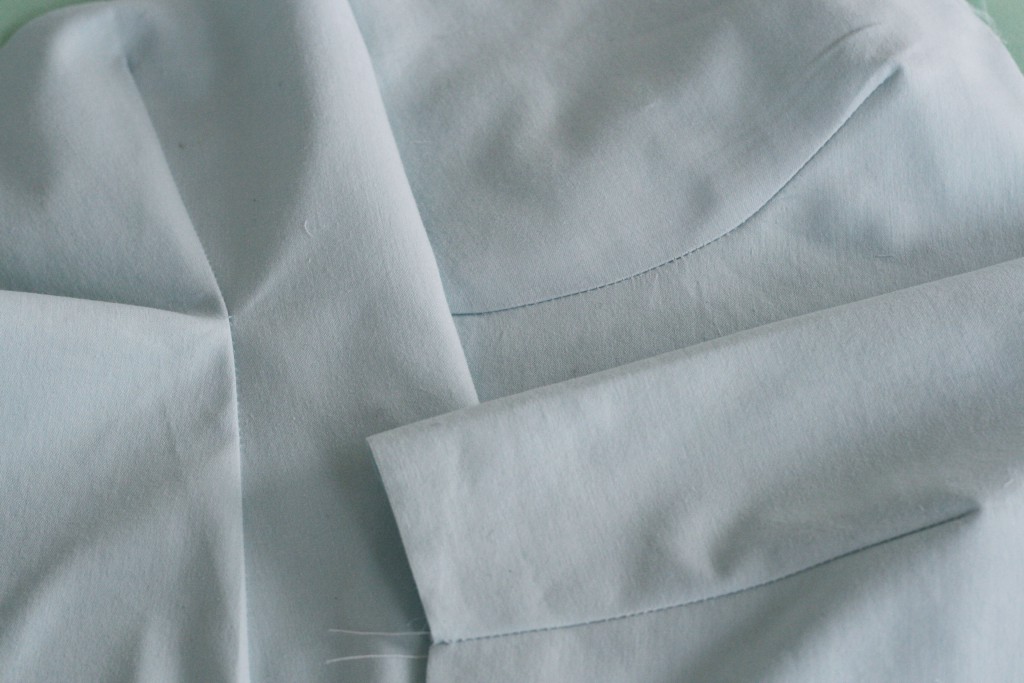
For beginners, sewing darts tends to seem like a complicated step. I know that I was confused about getting a straight line and ending right at the point. Double pointed darts seemed even more confusing. After some time spent practicing, I was able to master the art of the dart. I’m sure that if darts are troubling you, these tips will help you! If you’ve been sewing darts for awhile, please share any helpful tips in the comments or in the forum. We always enjoy learning from you!
Straight Dart
Straight darts have only one point with dart legs along the edge of the pattern. They’re probably the most common kind of dart in home sewing. Chances are good that you’ve had to sew a few bust or waist darts.

1) To sew a straight dart, make sure the point of the dart is marked on the fabric and the ends of the dart are clipped along the edge. With tailor’s chalk, fabric marker or pencil, draw the dart.
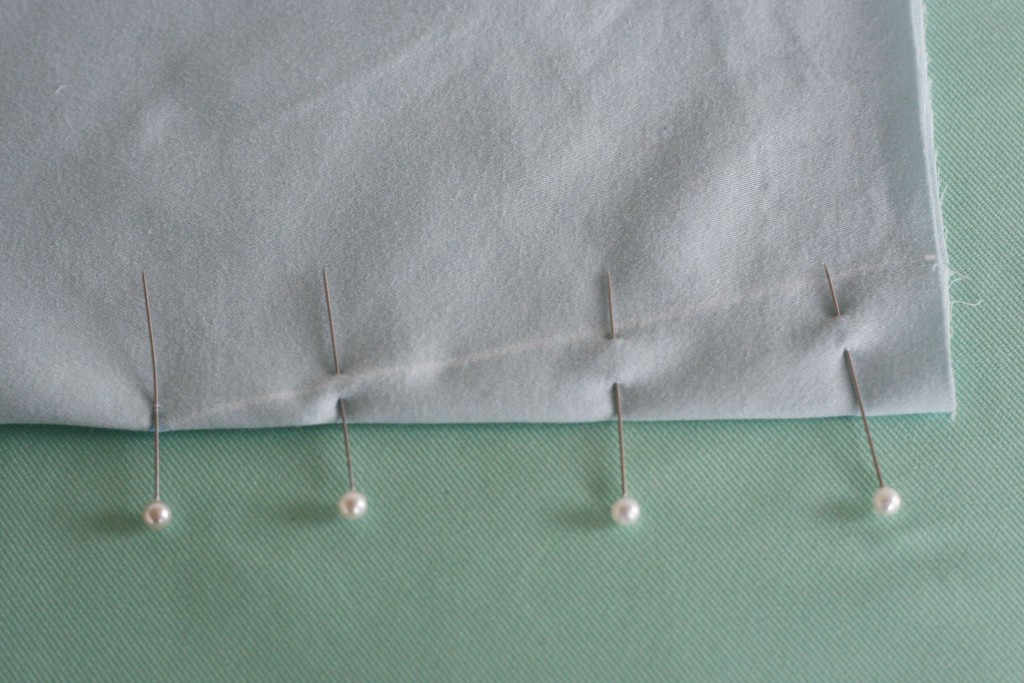
2) Fold the dart, matching up the lines as best as you can. Lightly pin in place. Eventually you may not need to pin unless you’re using a particularly difficult fabric.
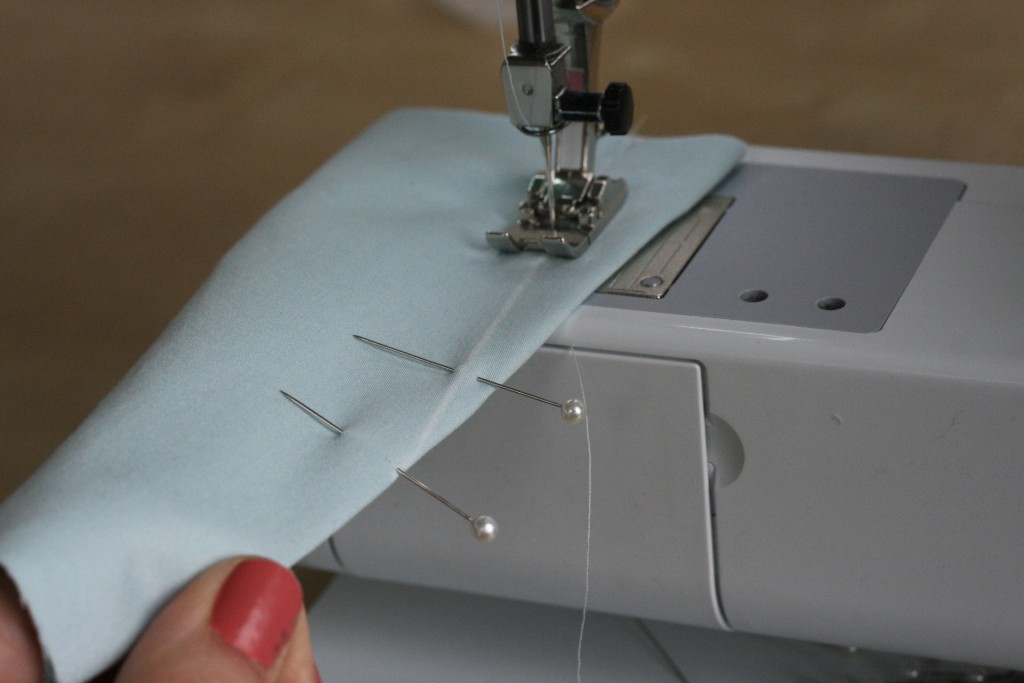
3) Slowly sew along the marked line. After sewing off the fabric, leave a long thread tail. Knot the tail close to the edge. This keeps the thread from coming undone. Take care not to pull the knot tight against the fabric as it will cause puckering just as backstitching at the end will.
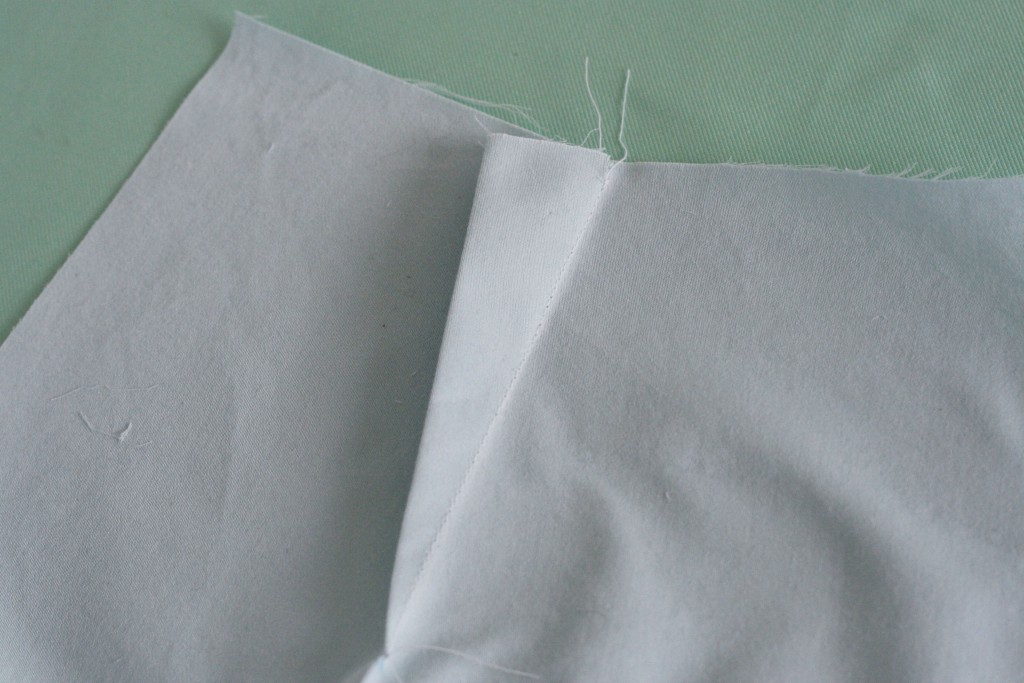
Curved Dart
Curved darts are often used around the bust as they can be very flattering. All curved darts with legs along the seam allowance are sewn the same way as a single point dart. They’re just curved which means you may need to sew a little bit slower.

1) Here the seam allowance is drawn along the curved dart to make sewing a bit easier.

2) Carefully pin the dart.
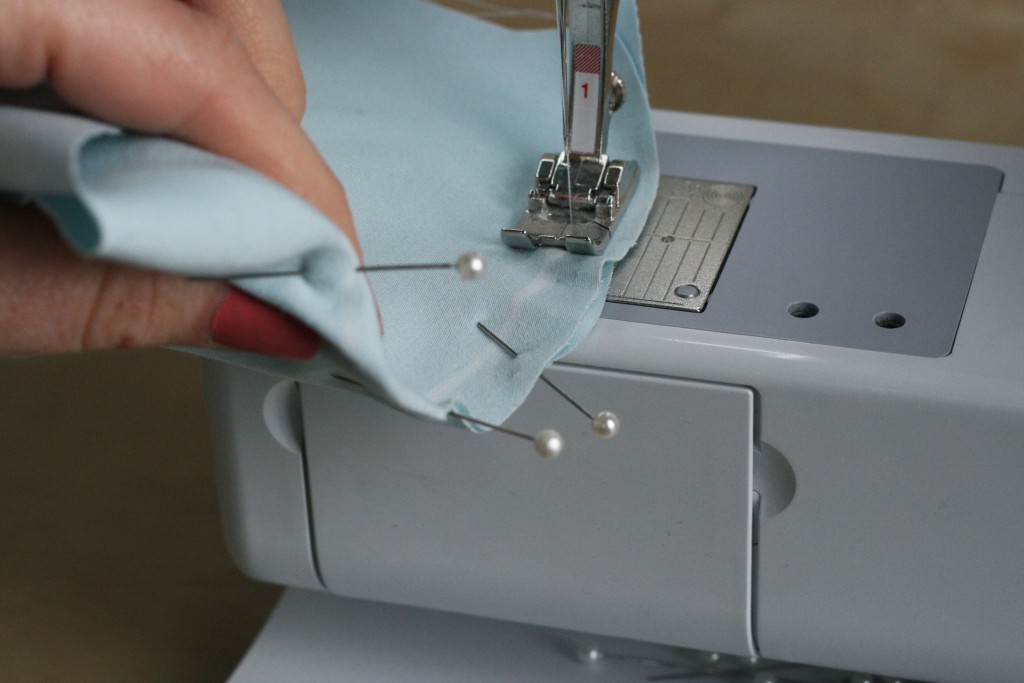
3) Slowly sew the dart. Knot the thread tails at the end.
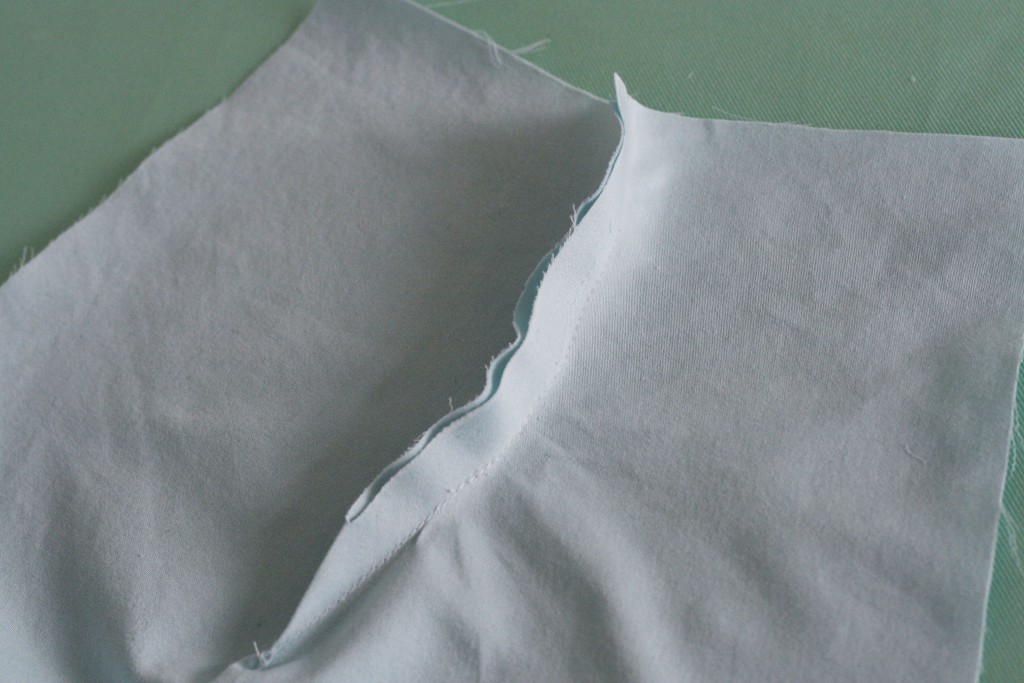
Double Point Dart
Double point darts tend to be found on dresses with simple lines.
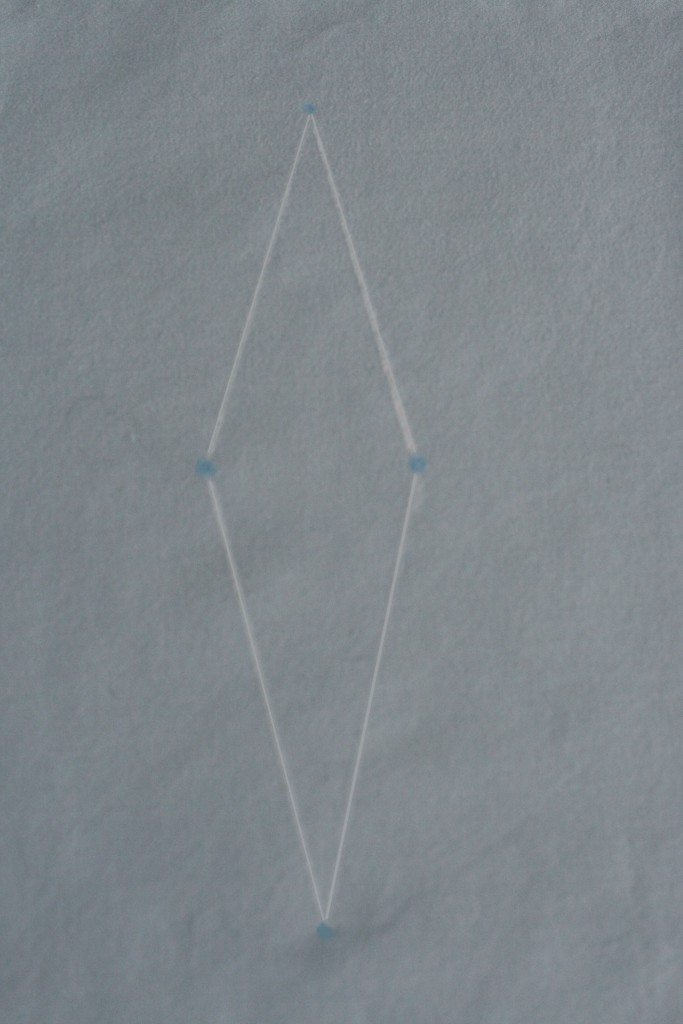
1) Place tracing paper beneath the pattern. Trace the dart with a tracing wheel. Or mark the sides and points of the dart, matching them up by drawing lines with a ruler and fabric pencil. Your dart should look similar to this.
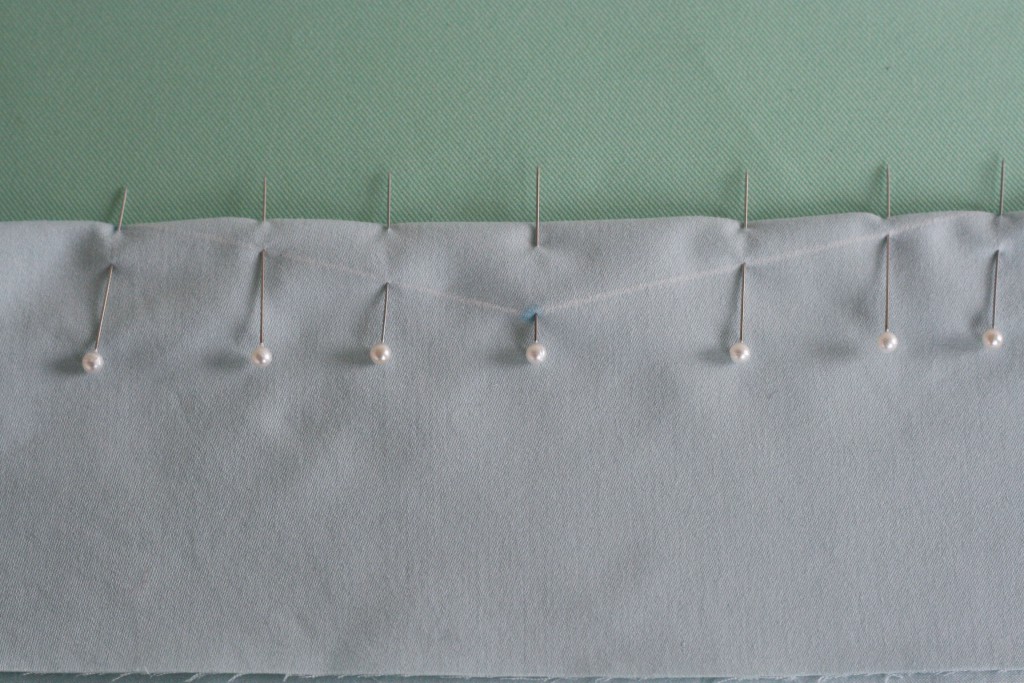
2) Fold the dart, matching up the lines. This will take some time to do, especially if it’s a long dart. Pin as you go.
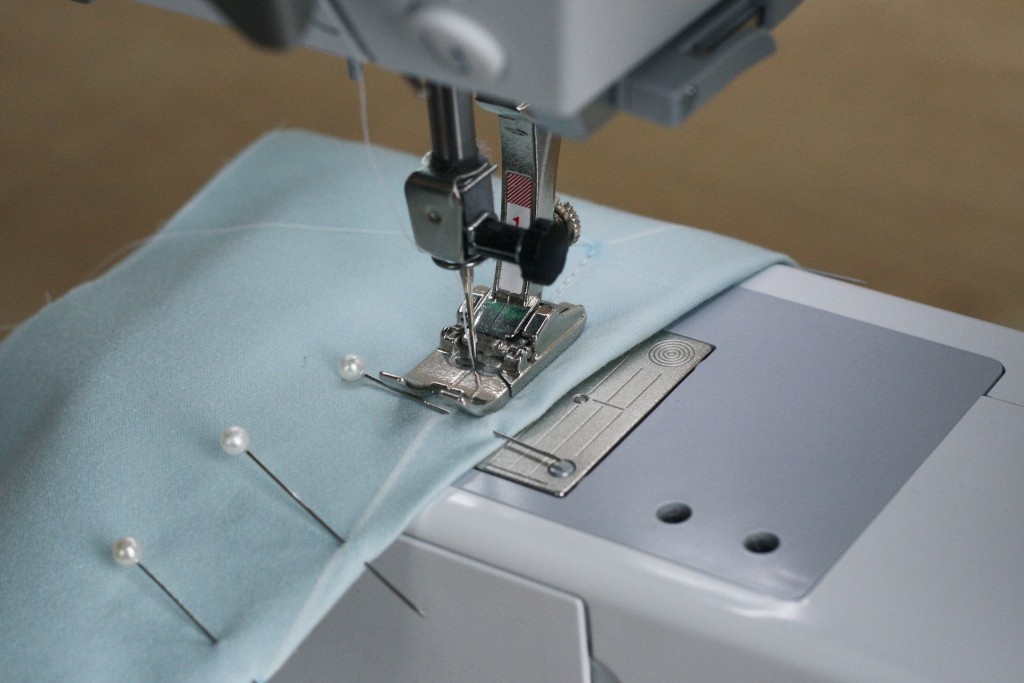
3) Start sewing in the middle of the dart. If your dart doesn’t have little points on the side like this simply start sewing at the widest part. Sew to the end of the dart and tie off the threads.
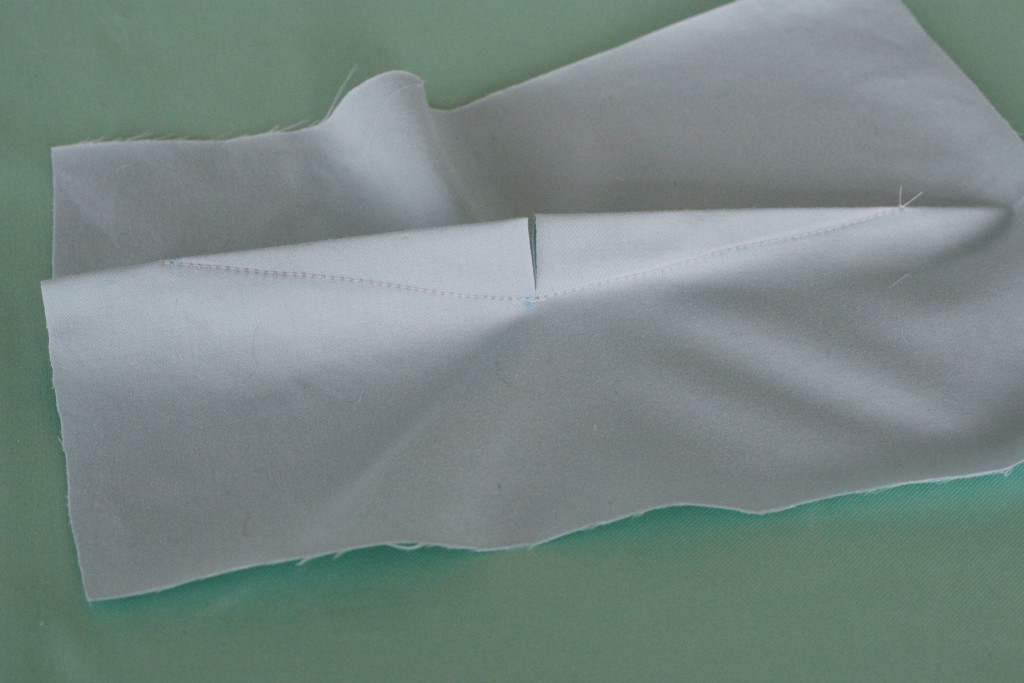
4) Repeat the last step for the second leg of the dart. For some darts, you’ll need to clip the center, at the widest part, in order to relieve fabric stress.

 Sign In
Sign In

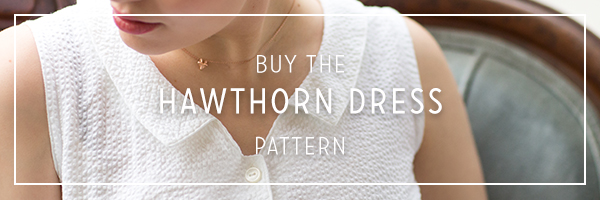
Comments
paisleyapron
July 28, 2011 #
It would be very helpful to show how to press these darts–it seems to be the natural next step and important to the success of sewing them.
Sarai
July 28, 2011 #
We’ll try to add a related tutorial on pressing darts. There are only so many hours in the day (unfortunately)!
paisleyapron
July 31, 2011 #
Thank you, Sarai! I understand about the lack of 28 hour days…it would be nice to have extra–for more sewing. ;)
a.b.
July 28, 2011 #
The only time I’ve done darts they have been double point, only the side points were curves. I used a french curve once (in a class) but just winged it at home. What is the difference?
Sarai
July 28, 2011 #
Hi a.b., I’m not sure I understand your question. Are you asking about the difference between using a french curve and not using it? Or the difference between a curved dart and a straight dart? Or something else?
Lavender
July 28, 2011 #
On straight darts, I find that pointing the pin down through the marked line on the side facing up, directly to the marked line below, then angling the pin up through the marked lines further along, helps make certain that both dart lines (top & bottom) will be stitched through. You can leave those parallel pins in, or remove after inserting perpendicular pins, as in the illustration above.
Instead of leaving a tail to tie off, sometimes I’ll simply pick up the presser foot and back stitch within the dart. I don’t always do this, but for stable fabric, it works well.
Sarai
July 28, 2011 #
Good tips!
Backstitching into the seam allowance of the dart is another good technique (though perhaps slightly trickier for a beginner than tying off).
Rachel P.
July 28, 2011 #
I’m so glad you shared this! Darts intimidate me as a beginner sewer and I’ve avoided sewing tops for myself because of them. Thank you!
Emma
July 28, 2011 #
A couple of questions…
Do you recommend backstitching at the start of the dart?
I was taught not to back stitch at the end of the dart because it could distort it and not press flat. Would backstitching into the seam allowance prevent this from happening?
And I do agree with PaisleyApron- some photo of pressing would be wonderful, when you have the time, of course :)
Sarai
July 28, 2011 #
I don’t bother backstitching at the start of a single sided dart, because it’s in the seam allowance. It’s usually enclosed, so securing the thread isn’t a big deal. I know some people do backstitch though.
On a doublesided dart, you can backstitch in the center (when you start the dart) if you like, but again it’s not necessary. Overlapping the two lines of stitching slightly will keep the stitching pretty secure there too.
What Lavender mentions above is that you lift the presser foot at the end, and move it back into the seam allowance before lowering and backstitching. The result is a little “loop” of thread, so the backstitching isn’t right at the tip. This helps prevent bulk.
Emma
July 28, 2011 #
OOOOH I get it now. Couldn’t get the visual in my head. Thank you :)
Lavender
July 29, 2011 #
Thanks for clarifying! I’m so visual, and explaining sewing techniques without illustrations is tricky :)
Handmade
July 28, 2011 #
Good tips – I was also told that if you decrease the stitch length towards the end of the dart it makes the stitches more secure – I think on very fine fabrics this might be a good idea.
Emily
July 29, 2011 #
Thanks for all the terrific tips for beginners! I successfully installed an invisible zipper for the first time using the tutorial.
Can you do a tutorial on linings, and how to create a lining when the pattern doesn’t have one included? I’d love to have a lining for the Crepe dress and others; just am not sure how to get started.
Thanks!
Saeriu
July 29, 2011 #
Great info on darts! The hardest darts I’ve ever seen, and the only time I’ve ever seen them, were L shaped. The long part of the L came out from the seam and the short part pointed upwards. They were a pain to sew and I had to redo them several times…in the end, I still couldn’t get them 100% perfect, so I put a trim along the long L portion and wrapped it around the entire top portion of the dress. It made it look like an empire waist with small darts pointing up. I was determined to get it nice since it was my wedding dress. :)
Mary
July 29, 2011 #
Another good tip is the decrease your stitch length gradually as you near the end of your dart. Make a few stitches right on the edge and then sew off the fabric and leave a long tail, as mentioned already.
Hannah
July 30, 2011 #
My favorite way to sew darts is to take out the upper thread, then thread the bobbin thread up through the needle and backwards up the way I normally thread my machine. Using a tiny stitch length I start at the point of the dart and sew from there off the edge of the fabric, backstitching at the end. This way no tail threads are left on the point. The only flaw with this method is you have to re thread using the bobbin for every dart, a little time consuming, but worth it, especially when working on sheer fabrics.
Laura
July 31, 2011 #
Darts are one of the things that I transfer the pattern markings on. The tracing wheel is one of the things I’ve never managed to make work, so instead I use embroidery transfer paper. I also have a tendency to leave long tails that I tie off and then hide the loose threads inside the actual dart…
DK
July 31, 2011 #
This is amazingly helpful! All of the tutorial posts are helpful and I love you all for taking the time and effort to make and share them. Thank you!
samantha
August 1, 2011 #
How do you measure for them or know where to place them? Im very much a beginner but I have an idea in mind for a top that i would like to put darts in. Thanks!!
Sarai
August 1, 2011 #
Hi Samantha… this tutorial is assuming you have a pattern that already has darts.
If you are adding darts, you basically want to make sure that the dart points toward the apex (high point) of any curve. So a bust dart would point to your nipple, basically. It should end at least 1 inch from that point.
Here’s a post I did at Sew Mama Sew a while back that explains a bit about how darts work and how they’re positioned on garments.
Char
August 3, 2011 #
Hi, as my experience tells me, when sewing the darts, instead of tying off the end near the point, you back stitch up the fold and no more tying threads and you get a nice sharp point…..
kristine
August 8, 2011 #
to get a nice point at the tip of the dart, i was taught to take a few more stitches right along the folded edge of the fabric past the marked end of the dart, then tie the threads together. they lay nice and flat when pressed.
jenny
August 9, 2011 #
Thanks, this is really helpful. I’ve been sewing for years, but had a long break and lost a bit of the knack!
I’m interested in what you think are the best methods for transferring the pattern markings onto the fabric. I used to use a fabric pencil and make a hole in the pattern to make the dots, then line them up by poking pins through the marks on the fabric… pin the darts in place then sew. But am not happy with this method.
Tracing wheel?
Sarah
October 19, 2011 #
Hi I always struggle with breast darts that end up too pointy at the dart point. Any suggestions? Thanks
mariacollege
December 18, 2011 #
I have not yet encountered a curved dart, when are they often used? I know you said for bust area, but is it meant to help with a fuller bust? Thanks for showing the different kinds of darts:)
darcy
July 9, 2012 #
Huh….i’m sewing a stuffed animal and there’s a little tiny two-point dart in it, i thought this was how you did it but it didn’t look right, ill try again, thanks!
arista
September 12, 2012 #
too bad you didnt show a before/after to see what the darts can do. Theres also the natural dark where you sew a straight dart half way then the rest is curved.
Neera
April 16, 2013 #
Hi Sarai, I’m Neera from Malaysia. I’ve bought your book “The Collete Sewing Handbook” it was truly awesome! Haven’t tried the pattern yet but the tips inside are really helpful. This is the 7th book in my collections. Anyway, i have a question. I would like to know how can i remove darts from a dress pattern? I couldn’t find any in the internet nor my books, it only showed for blouse/shirt. Since a dress have double point darts and bust darts, i find it was quite difficult to adjust it. I hope to hear from you soon! Thank you.
Sarai
April 16, 2013 #
It depends on the pattern and what your intent is, but usually what you do is tape the dart closed, then retrace the pattern, evening out the seamlines as best you can. Just be aware that removing darts will sigificantly change the fit of the pattern!
Becca
May 21, 2013 #
Thank you for the tutorial. I am working on your Laurel pattern version 4. I have done regular darts in the past but have never seen a double pointed (I am a very new sewer). I cut and pinned pattern but was unsure of marking the vertical double dart, this helps :)
Toro
July 21, 2013 #
Lovely tutorial on Darts. I want to ask a question. Can one sew darts on the bias especially on a lightweight material such as Georgette or chiffon?
Amber
July 23, 2013 #
I’m making the Laurel blouse version 4 and was wondering exactly what you mean by press darts flat then down. I get the down part but what do you mean by press flat? Some pictures of the final step would be great here.
Thanks!
Sarai
July 24, 2013 #
You want to press the dart from the inside so that you get a nice crisp crease down the middle of the dart. Then fold and press it down.
Patt
August 22, 2013 #
I haven’ t done much sewing the last 20 years but decided to give it another try. Your tutorial on darts was the best and the clearest demonstration. Thank you so much.
Peter John
January 5, 2014 #
I followed the steps shown above and it worked out just fine. Thank you.
Erinn
January 13, 2014 #
So, I’m confused. Do you backstitch for the dart, and do they stay like that or do you press them down?